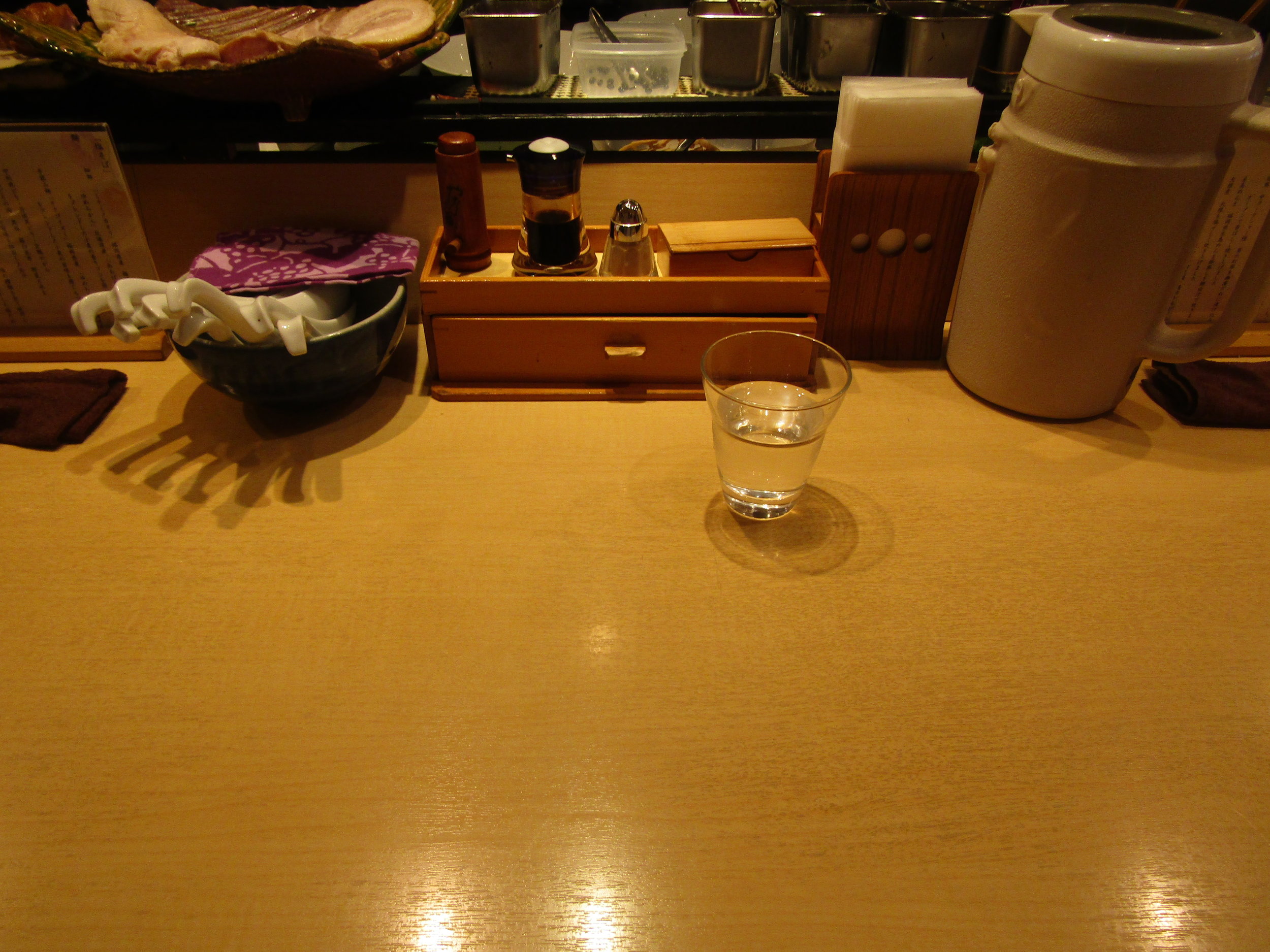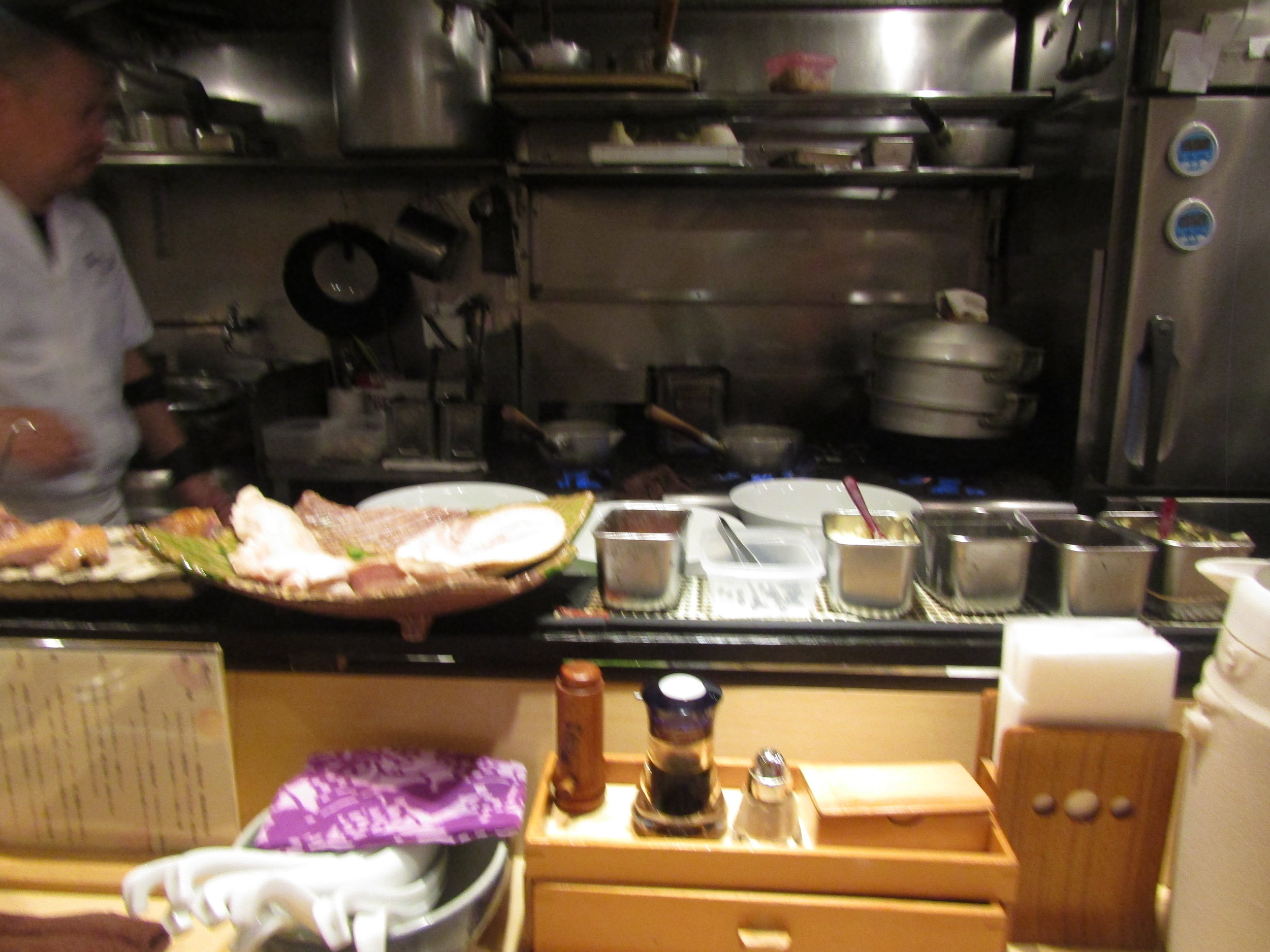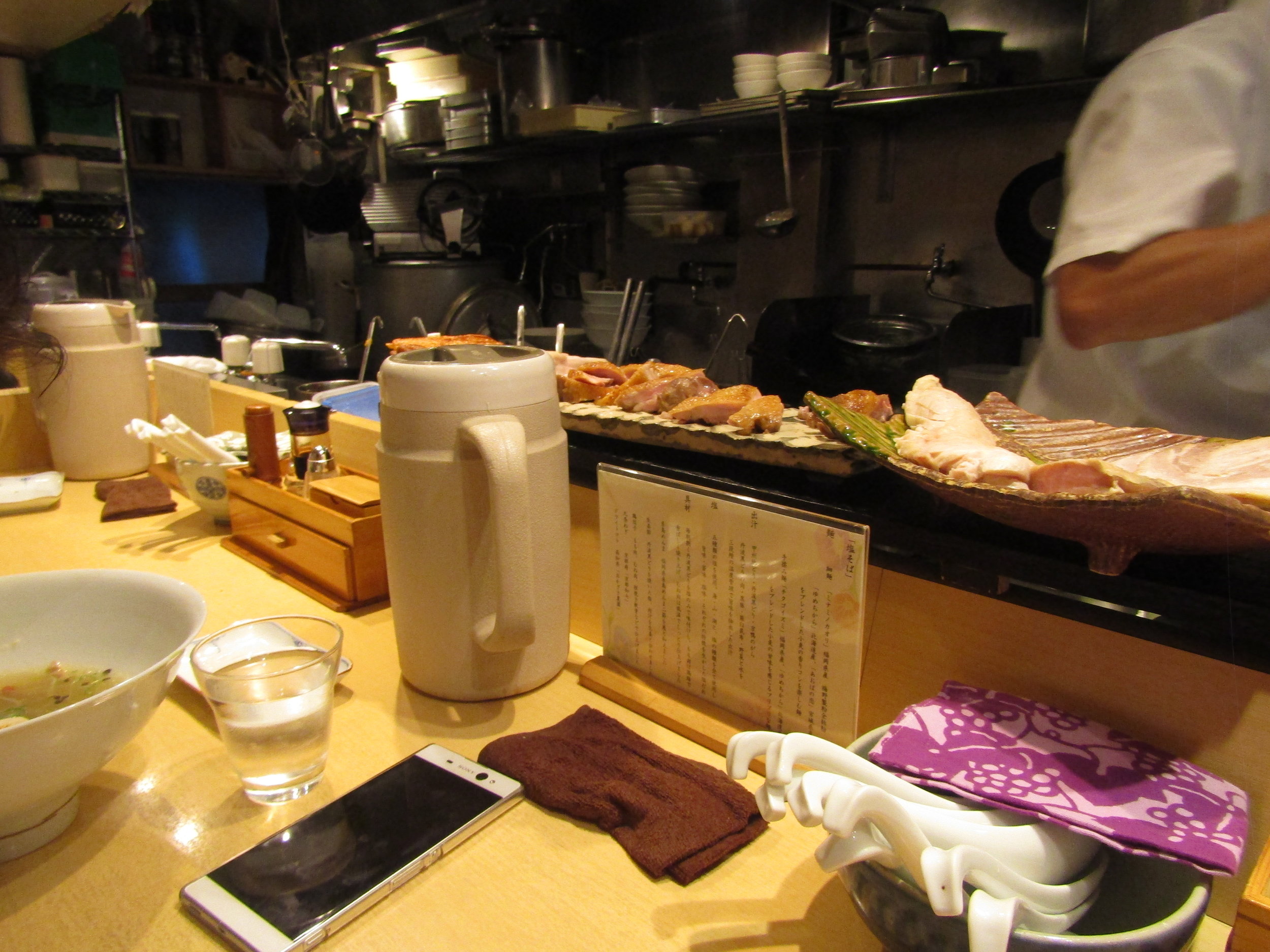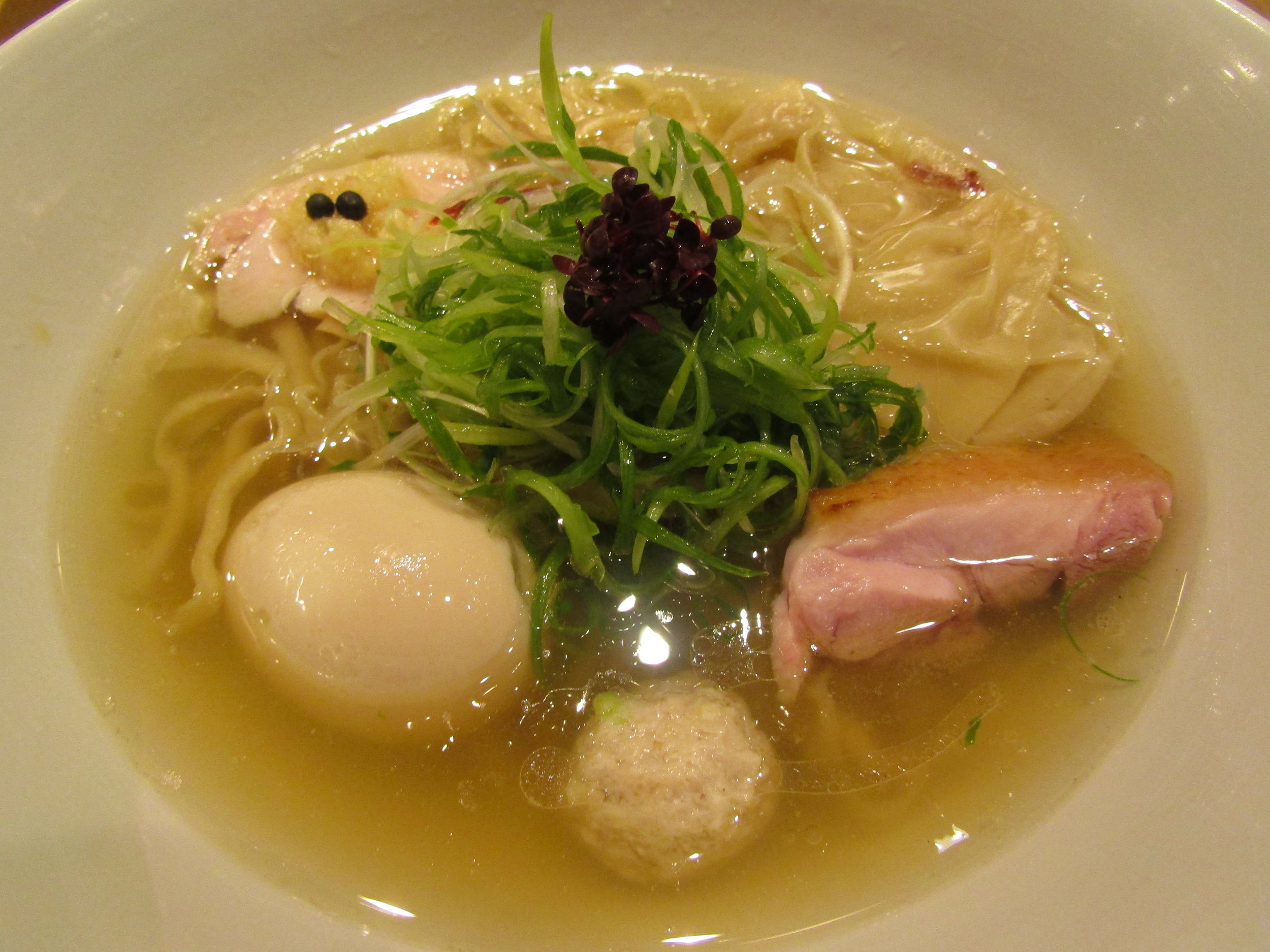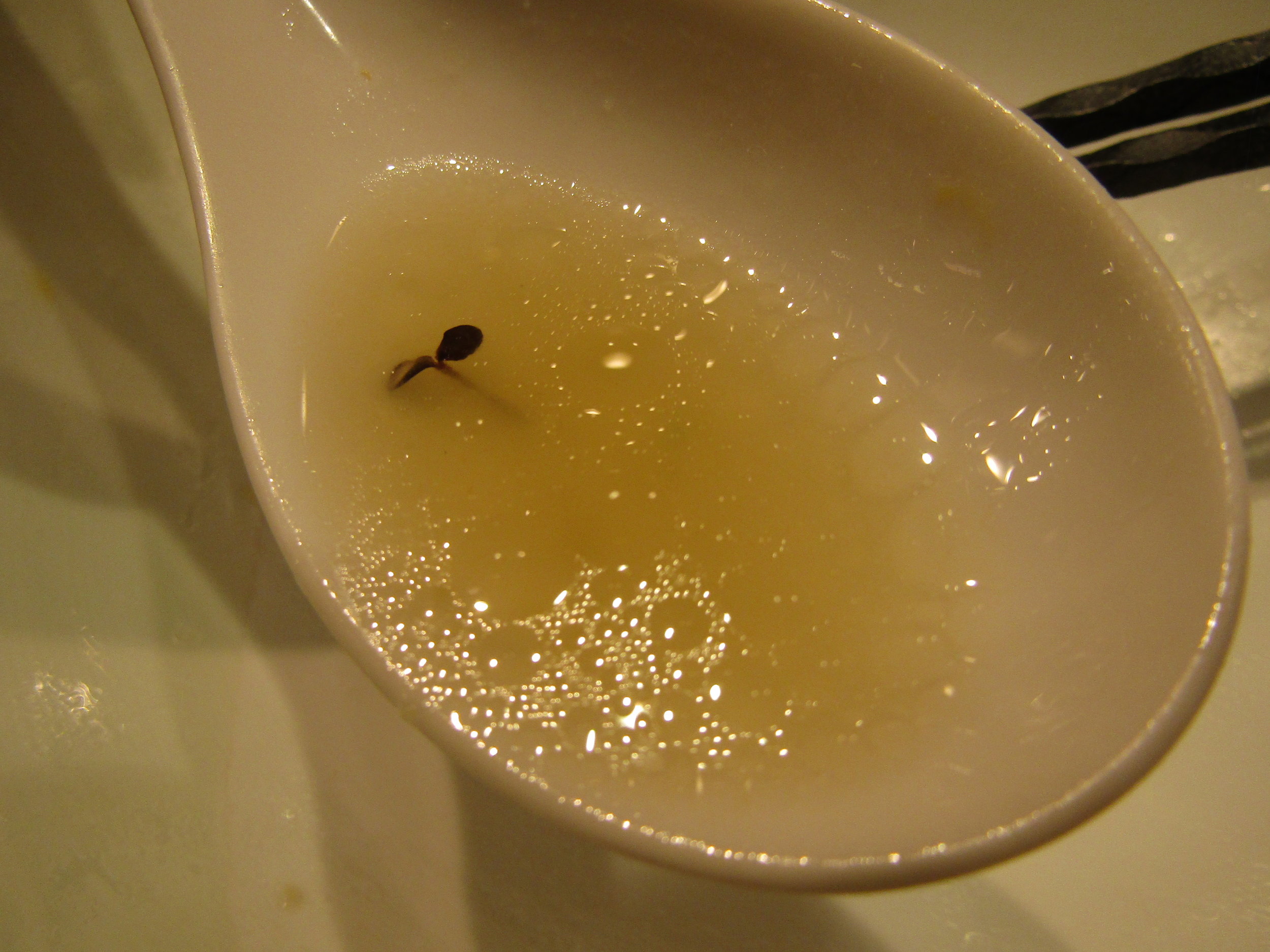Motenashi Kuroki (饗 くろ喜); Best Shio Ramen in Tokyo?, Akihabara
Ten minutes from the bright lights, maids, and cosplayers of Akihabara sits a quaint ramen shop serving up one of the highest quality ramen in Tokyo since 2011. Motenashi Kuroki has made a huge name for themselves since their conception as an annual candidate for best shio ramen in Tokyo and it definitely has not disappointed. As I made my walk from the station, I could already smell the incredible aroma of the shop from almost a block away. The line may be a bit intimidating, but the staff will kindly let you know how long it’ll be and how to purchase your tickets so don’t be too worried. Kuroki offers English menus as well as staff that can speak basic English so if you need any help, feel free to ask.
As you approach the shop, you’ll see two lines, one right by the door and the other adjacent on the opposite side of the sidewalk. Line up in the line closest to the street and wait for the staff to instruct you to purchase your tickets inside. Customers purchase their tickets one at a time so wait til the person in front of you comes back after purchasing theirs before going in to buy yours. Come back to your spot in line and the people behind will follow. Kuroki offers a variety of ramen options, but the most recommended and best seller is definitely their Shio Ramen. I opted for their Tokusei which comes with extra toppings and I highly recommend paying the extra 300 yen for it. In addition, they have shumai, or dumplings, as a side dish that is incredibly popular as well. If you’re alone, you’ll likely be seated at the counter in front of the chef in action. If you come as a group, they have table seating in the back.
I was honestly pretty hesitant to come here because the reviews I had read hyped the restaurant so much that I wasn’t sure it would live up to the expectations, but boy was I wrong. The Shio Ramen is incredible, and it might just top my list of best shio ramen in Japan. First let me talk about the aesthetics of both the ramen and the shop. Everything in the shop is designed like a Ford manufacturing center. The fridge in the far right holds the soup and toppings that they pull out when needed. The back area has burners to keep the soup warm, individual pots to heat up soup to order, and a boiling station to the left of the soup for the warm toppings and noodles. The counter is lined with the cold toppings for the ramen that gets replenished from the fridge when needed. The main chef cooks the noodles, won ton, and egg to order while his sous chef warms up the soup. Each bowl has their seasoning oils and tare poured just before the soup is ready, all while being perfectly timed with the noodles and toppings. Each topping has a special place in the bowl. The noodles are perfectly folded in to the soup, and the perimeter of the bowl has each topping carefully placed so you can see the beauty of each aspect of the ramen. Grater ginger and raw peppercorn are placed over the chicken char siu so you can enjoy them as a flavor change mid meal and not mixed together from the start, and finally its topped with a heaping handful of shocked green onions.
When you give your ticket the staff will ask for your preference in noodles; hand massaged thick noodles or straight noodles. Pictured is the hand massaged thick noodles. Both were recommended from the staff so I doubt you can pick a wrong choice here so go with whichever you prefer. My noodles had an incredible texture from the tenderizing done before cooking and had a nice chewy consistency. It paired quite well with the soup, clinging just enough soup to balance the two. The broth is made from a slow simmer of chicken, duck and kombu (Japanese seaweed). As you can see from the picture, the soup is clear with a golden tint. While it looks light, the flavor is incredibly powerful and has an amazing chicken and duck punch. The shio tare really accentuates the deep chicken and duck broth and pulls as much of their flavors as possible.
So the reason why I recommended the extra 300 yen for tokusei is because the toppings are amazing. All of them are indredible individually, but even better when combined in this bowl of ramen. The duck is nice and smoky giving a great aroma to the bowl, while the won tons are pillowy and soft soaking up the delectable flavors from it all. Soft boiled egg is perfectly cooked and seasoned, not overpowering the soup. The fresh, crisp green onions give a nice variety in texture as well as the chewy menma bamboo shoots. The menma, however, isn’t like typical menma that you get at other restaurants. The bamboo shoots are raw, takenoko, that provides an incredible depth of earthy flavors. What was most surprising was the chicken meatballs. Usually chicken meatballs tend to be a bit rubbery and usually has a sharp flavor added like a yuzu citrus, but Kuroki’s meatballs has a purely chicken flavor. I believe there is some grated mountain yam which gives it its tenderness while not affecting the flavor. They are incredible soft and melts in your mouth when you eat them. I’ve never had chicken meatballs this tender in a ramen and reminded me of tsukune that you would find in a yakitori restaurant. The sous vide style chicken is moist and tender and pairs well with the grated ginger placed over it, giving it almost like a Hainan/Singaporean chicken flavor profile. Be sure to bite in to the raw peppercorn mid meal. It gives a spicy and peppery change to the bowl that brings out a totally different flavor dynamic. The chef will actually inform you of this to remind you when he gives you your bowl.
I honestly don’t know what else to say. The Shio Ramen was nothing short of perfection. If you’re on the hunt for the best ramen shops around Japan, be sure to add this to your list. You won’t want to miss the best shio ramen in Japan.
